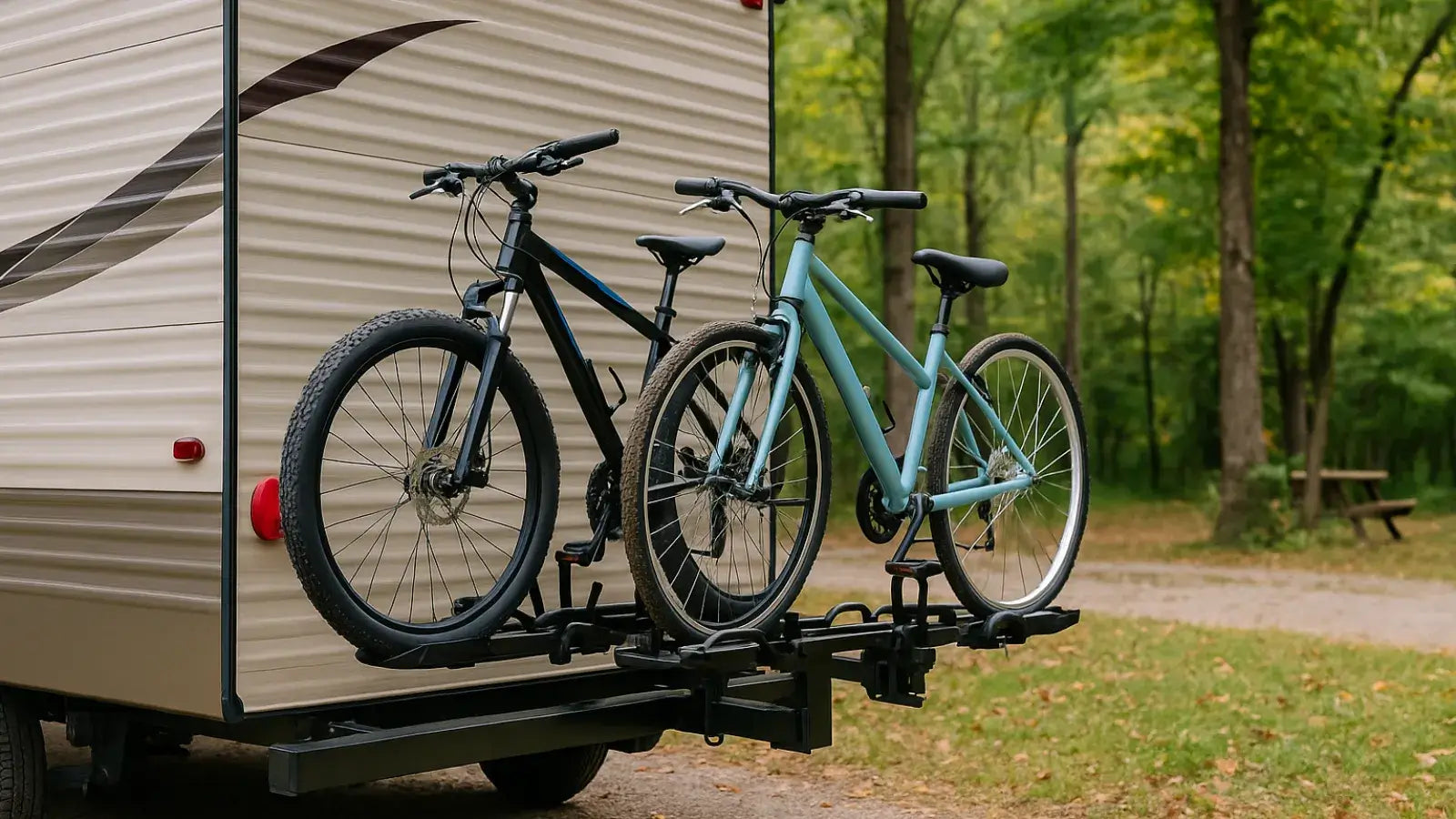
Best Bicycle Carriers for Campers and Travel Trailers: 2025 Buyer’s Guide
Your Adventure, Your Bikes
The vision is perfect: you, your camper, and your bikes ready for the trail. But moving those bikes safely is where many good plans fail. Putting a regular car bike rack on a camper or travel trailer often leads to disaster. The quick answer is that the best bicycle carriers for campers depend on your RV type, your bikes, and where you can mount the rack.
The most important rule is to pick an RV-rated rack made to handle the extreme forces at the back of a trailer. This guide will show you why these racks are different, how to check your setup, the types of carriers you can buy, and how to make a safe choice for your trips.
Why Travel Trailers Can Destroy Ordinary Bike Racks
A regular bike rack breaks on a camper because of physics. Think of the back of your travel trailer like the end of a whip. When you drive over bumps and holes, the movement gets much stronger by the time it reaches the back bumper.
This trailer bounce creates intense up-and-down and side-to-side forces that can be two to three times stronger than those on a car. Regular racks just cannot handle this constant, violent movement. This is why you must understand the unique stress put on equipment mounted to an RV.
An RV-Rated or RV-Approved label is not just marketing talk. It means a completely different product built to survive.
- Heavier-Duty Materials: They use thicker steel and stronger parts that resist breaking and cracking.
- Stronger Construction: Welds are bigger and reinforced to handle stress from all directions.
- Better Stabilization: They include superior anti-wobble systems designed to fight intense, long-lasting vibration and stop the rack from shaking itself apart.
Picking a non-rated rack is not a gamble. It will almost certainly fail, risking your bikes, your camper, and the safety of others on the road.

The 7-Point Checklist for Bike Rack and Camper Compatibility
Before you look for a bicycle carrier, you need to check your own gear. Answering these seven questions will create a personal requirements list, making sure you buy a rack that works and stays safe.
1. What is your vehicle?
The answer—Travel Trailer, 5th Wheel, Pop-up Camper, or a Class A, B, or C Motorhome—is the most important starting point. A solution for a 5th wheel is often completely different from one for a pop-up camper because of big differences in frame construction, weight, and length.
2. Where can you mount a rack?
Find your possible mounting spots: a rear hitch receiver, the A-frame at the front, the rear bumper, a factory ladder, or a spare tire. Not all options are available or safe for every vehicle type.
3. Is your bumper strong enough?
This is a critical safety check for travel trailers. Most standard RV bumpers are thin, hollow steel tubes tacked onto the frame. They are NOT designed to carry weight. A bumper-mounted rack needs a strong, continuous-welded 4-inch to 4.5-inch square steel bumper. If you are not sure, assume it is not strong enough.
4. What bikes are you carrying?
Count the total number of bikes and, more importantly, their total weight. Every rack has a maximum weight limit that should never be exceeded, especially on an RV.
5. Are you carrying E-Bikes?
E-bikes change everything. They are much heavier, with many models weighing 50-80 lbs each. This weight immediately rules out most ladder and bumper-mounted racks. Their frame designs, especially step-through models, also need platform-style racks that support the wheels, not hanging racks that clamp a missing top tube.
6. How often will you access the bikes?
Think about how easy it is to load and unload. A-frame and hitch racks are usually lower and easier to reach. Ladder-mounted racks require lifting bikes high in the air, which can be hard and tiring, especially with heavier bikes.
7. Will the rack block access?
Picture the rack and bikes in place. Will they block a rear storage area, a window, or your taillights and license plate? Blocking lights and plates is illegal in most places and a serious safety risk.
Understanding the 4 Main Types of Bicycle Racks for RV and Camper Use
With your checklist done, you can now look at the main types of bicycle carriers for campers. Each has clear advantages and disadvantages that work with different RV setups.
| Rack Type | Best For (Vehicle Type) | Common Mounting Location | Pros | Cons |
|---|---|---|---|---|
| Hitch-Mounted | 5th Wheels, Motorhomes, Trailers with frame-mounted hitches | Rear 2-inch Hitch Receiver | Very stable, high weight capacity, best for e-bikes | Can block rear access, adds length, requires an RV-rated model |
| A-Frame / Tongue | Travel Trailers, Pop-ups | A-Frame (above propane tanks) | Excellent stability, bikes are visible, frees up rear | Can limit turning radius, may need to remove bikes to access tanks |
| Bumper-Mounted | Trailers with reinforced steel bumpers ONLY | 4" to 4.5" Square Bumper | Cheap, simple installation (on the right bumper) | Unsafe on most bumpers, very low weight capacity, high risk of failure |
| Ladder-Mounted | Motorhomes or Trailers with factory ladders | Rear RV Ladder | Uses existing structure, keeps hitch free | Low weight capacity (no e-bikes), high lift, stresses ladder mounts |
1. Hitch-Mounted Racks
These carriers slide into a 2-inch receiver hitch welded or bolted to your camper's frame. This is the most stable and secure method, offering the highest weight limits. It is the best solution for carrying multiple bikes or heavy e-bikes.
The key detail is that you MUST use an RV-Rated hitch rack. A standard hitch rack from your car will fail from the amplified trailer bounce.
2. A-Frame / Tongue-Mounted Racks
These smart systems mount on the A-frame of a travel trailer, usually sitting above the propane tanks. This is a great option as it puts the bikes in a very stable position where you can see them in your rearview mirror.
It also leaves your rear bumper and hitch receiver free for other uses. The main thing to consider is making sure you have enough space between the bikes and your tow vehicle during sharp turns.
3. Bumper-Mounted Racks
Extreme caution is advised with this type. These racks clamp directly onto the square rear bumper. We have heard too many horror stories of bumpers peeling away from the trailer frame, dragging thousands of dollars worth of bikes down the highway. This option should only be considered if you have a heavy-duty, continuous-welded steel bumper and are carrying one or two very lightweight bikes. For most travel trailers, the bumper is simply not a structural mounting point.
4. Ladder-Mounted Racks
These racks hook onto the rungs of your factory-installed RV ladder. While they seem convenient, they have big limitations.
RV ladders typically have a low weight limit (check the sticker, often 200-250 lbs total), which includes the person climbing it. These racks are only good for one or two lightweight regular bikes. They are not for e-bikes. The high mounting position also makes loading and unloading a challenge.
Real-World Recommendations: Best Bike Racks for Campers and Trailers
Let's apply this knowledge to common situations.
Scenario 1: The Family with a Travel Trailer
- Setup: A 25-foot travel trailer, two adult bikes, and two kids' bikes (four total).
- Challenge: The bumper is the standard, non-structural hollow tube. They need to carry four bikes safely.
- Our Recommendation: A dual-solution is often best here.
We would first recommend an A-Frame rack for the two heavier adult bikes. This places the most weight in a stable, visible location. For the two lightweight kids' bikes, the safest and simplest option is often storing them inside the trailer during travel.
If an A-frame rack is not possible, the next best (and more expensive) option is to have a certified welding shop professionally install a 2-inch hitch receiver directly to the trailer's frame. This would allow the use of a proper, RV-rated 4-bike hitch rack.
Scenario 2: The Couple with a 5th Wheel and E-Bikes
- Setup: A 35-foot 5th wheel with two heavy e-bikes (70 lbs each).
- Challenge: Extreme weight and the need for absolute stability and easy loading.
- Our Recommendation: This is a clear-cut case for a heavy-duty, RV-rated hitch-mounted rack.
Do not compromise. Look for models specifically rated for 80 lbs per bike. Focus on platform-style racks that support the bikes by their wheels, not hanging racks. This is especially important for step-through e-bike frames. A rack with a built-in loading ramp is a huge quality-of-life improvement and well worth the investment.
Scenario 3: The Solo Traveler with a Pop-Up Camper
- Setup: A pop-up camper with one or two lightweight mountain or road bikes.
- Challenge: Pop-up campers have very few structural mounting points. The rear is flimsy, and there is no ladder.
- Our Recommendation: The safest and most secure option for a pop-up is almost always a roof-mounted rack on your tow vehicle.
This completely avoids the limitations of the camper. If that is not an option, a tongue-mounted rack designed for the specific A-frame dimensions of a pop-up is the next best solution. We strongly advise against trying to mount any rack to the rear of a pop-up camper.

Safe Setup and Care: Installation Tips and Travel Maintenance
Your responsibility does not end after the purchase. Proper installation and regular checks are vital for safety.
Installation Best Practices
- Follow the manufacturer's instructions exactly. Do not improvise.
- Use a torque wrench to tighten all bolts to the specified values. Good and tight is not a measurement.
- Install all included anti-wobble pins, clamps, or devices. They are essential for an RV application.
Pre-Trip Safety Checklist
Before every trip, do this quick check:
- [ ] Check that all bolts on the rack are tight.
- [ ] Make sure all straps, clamps, and wheel chocks are secure.
- [ ] Ensure bikes are not blocking your license plate or tail lights.
- [ ] Use extra cam straps or bungees to secure the bikes to the rack AND to each other to prevent swaying and rubbing.
- [ ] Plan to stop after the first 10-15 miles of your trip to re-check everything. Vibrations can cause things to settle and loosen.
When selecting a rack, consider the tough standards seen in insights from extensive bike rack testing, which focus on build quality and stability above all else. Apply that same critical eye to your RV-specific choice.
Your Investment in Adventure
Choosing the right bicycle carrier for a camper is not about finding the cheapest option. It is about making a smart investment in your safety and your adventures. By starting with a thorough check of your RV and bikes, you can confidently select a strong, RV-rated carrier that is perfectly suited to your needs. A secure rack means your bikes will arrive safely, ready for the trails, every single time.
Frequently Asked Questions
1. Q: Can I use a regular car bike rack on my travel trailer?
A: No, you should never use a regular car bike rack on a travel trailer. The extreme forces and vibrations at the back of a trailer will quickly destroy a standard rack and potentially cause dangerous failures on the road.
2. Q: How do I know if my RV bumper is strong enough for a bike rack?
A: Most RV bumpers are thin, hollow tubes not designed to carry weight. Only use bumper-mounted racks if you have a heavy-duty, continuous-welded 4-inch to 4.5-inch square steel bumper. When in doubt, choose a different mounting option.
3. Q: What is the weight limit for bicycle carriers for travel trailers?
A: Weight limits vary by rack type and manufacturer. Ladder-mounted racks typically handle 50-100 lbs total, while heavy-duty hitch-mounted racks can carry 120-200 lbs. Always check the specific weight rating and never exceed it.
4. Q: Are A-frame mounted bike racks safe for travel trailers?
A: Yes, A-frame mounted racks are among the safest options for travel trailers. They mount to the strongest part of the trailer and keep bikes visible while driving. Just ensure adequate clearance during turns.
5. Q: Can I carry e-bikes on my RV?
A: Yes, but e-bikes require special consideration due to their weight (50-80 lbs each). You will need a heavy-duty, RV-rated platform rack with high weight capacity. Ladder and most bumper-mounted racks cannot safely handle e-bikes.
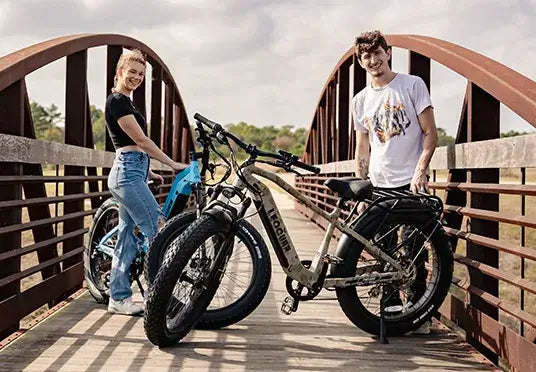
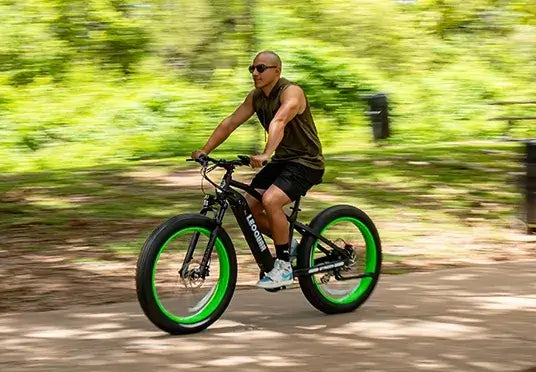
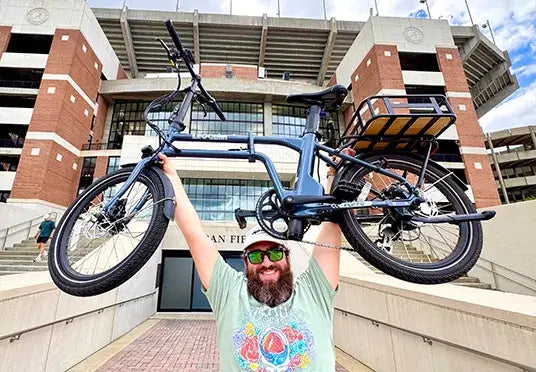
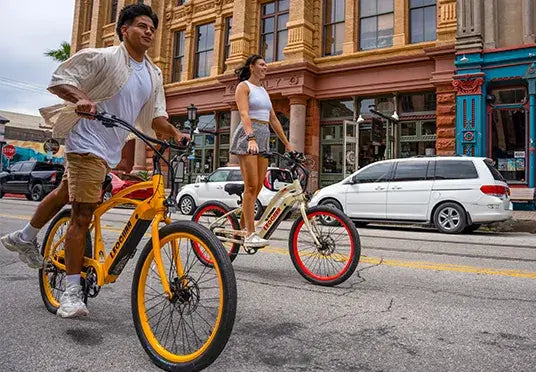
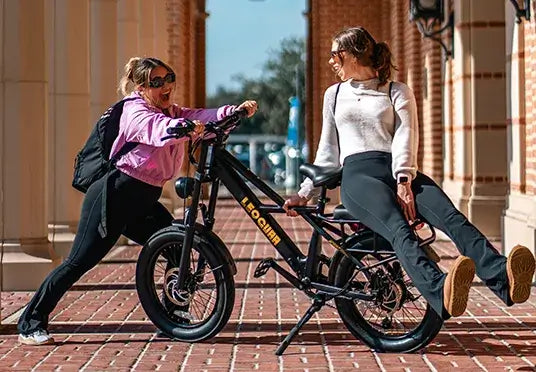
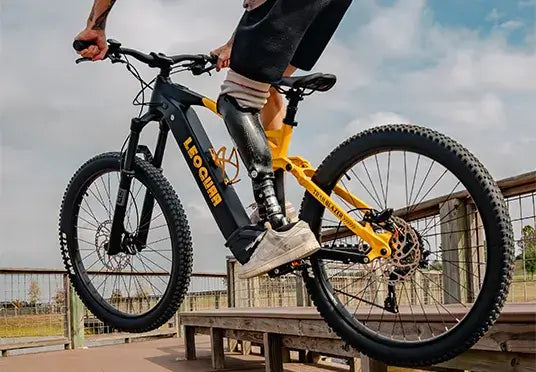































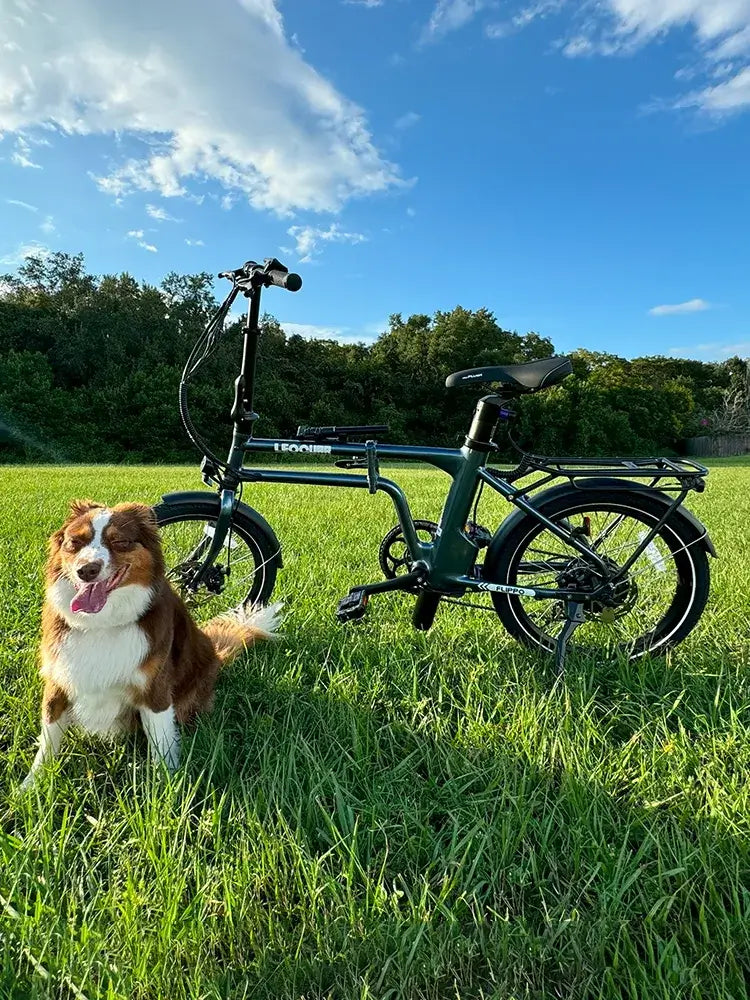










Leave a comment
Please note, comments must be approved before they are published.
This site is protected by hCaptcha and the hCaptcha Privacy Policy and Terms of Service apply.